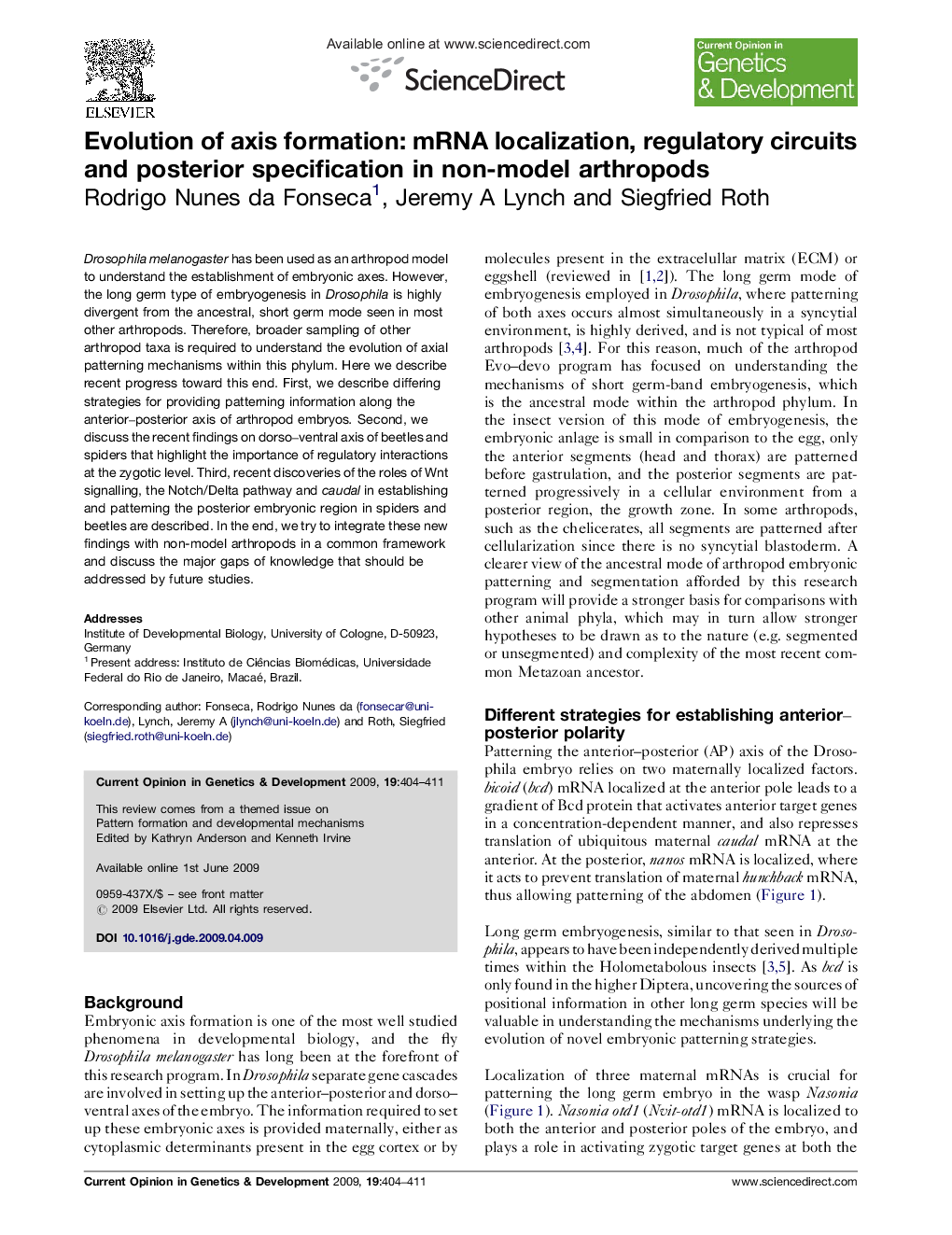| Article ID | Journal | Published Year | Pages | File Type |
|---|---|---|---|---|
| 2785157 | Current Opinion in Genetics & Development | 2009 | 8 Pages |
Drosophila melanogaster has been used as an arthropod model to understand the establishment of embryonic axes. However, the long germ type of embryogenesis in Drosophila is highly divergent from the ancestral, short germ mode seen in most other arthropods. Therefore, broader sampling of other arthropod taxa is required to understand the evolution of axial patterning mechanisms within this phylum. Here we describe recent progress toward this end. First, we describe differing strategies for providing patterning information along the anterior–posterior axis of arthropod embryos. Second, we discuss the recent findings on dorso–ventral axis of beetles and spiders that highlight the importance of regulatory interactions at the zygotic level. Third, recent discoveries of the roles of Wnt signalling, the Notch/Delta pathway and caudal in establishing and patterning the posterior embryonic region in spiders and beetles are described. In the end, we try to integrate these new findings with non-model arthropods in a common framework and discuss the major gaps of knowledge that should be addressed by future studies.
